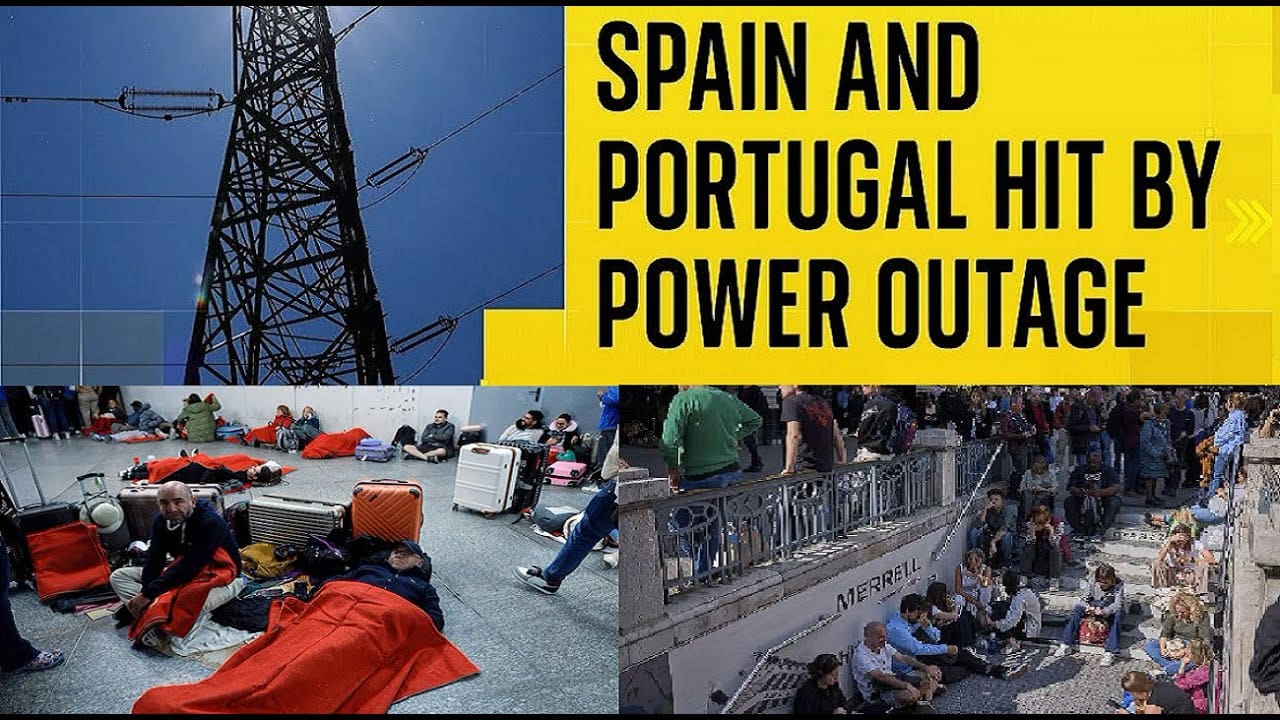Introduction
On April 28, 2025, a widespread and unexpected power outage plunged large parts of Spain and Portugal into darkness, disrupting daily life across the Iberian Peninsula. Millions of residents and businesses were affected, with major cities such as Madrid, Lisbon, Barcelona, and Porto experiencing sudden blackouts that lasted for several hours. The outage not only caused traffic chaos and halted train services but also raised concerns about the resilience and stability of the region’s energy infrastructure.
As power grids across Europe become increasingly interconnected, the implications of such large-scale failures are more far-reaching than ever before. Authorities and energy experts quickly mobilized to investigate the root cause, working to restore electricity and provide explanations to the public.
Timeline of the Outage
The spain and portugal power outage began abruptly in the early afternoon of April 28, 2025, with initial reports emerging from northern Portugal and western Spain. Within minutes, the blackout had spread to major urban centers, affecting transportation systems, communication networks, and essential services. Power was gradually restored over the next few hours, with most areas regaining electricity by the evening. However, some regions experienced prolonged disruptions, highlighting vulnerabilities in the grid and prompting an urgent investigation into the sequence of events.
Immediate Causes of the Power Outage
spain and portugal preliminary findings suggest that the outage was triggered by a failure in a high-voltage transmission line connecting Spain to the broader European power grid. This disruption may have been caused by a technical fault or an unexpected surge in demand, which overwhelmed the system and led to a cascading effect across the network. Investigators are also exploring whether extreme weather conditions or maintenance errors contributed to the sudden grid instability.
Role of the European Power Grid
The interconnected nature of Europe’s power grid means that a failure in one part of the network can quickly ripple across borders. In this case, the disruption in Spain and Portugal may have been exacerbated by an imbalance or fault within the broader European transmission system. Cross-border electricity exchanges, while generally beneficial for stability, can also amplify vulnerabilities. Experts are now analyzing how the grid’s interdependence influenced the speed and scale of the blackout across the Iberian Peninsula.
Impact on Daily Life
The power spain and portugal outage had an immediate and disruptive effect on daily life across both countries. Public transportation systems, including metro lines and electric trains, came to a standstill, leaving commuters stranded. Traffic lights failed, causing gridlock in major cities. Businesses were forced to close temporarily, and residents were left without access to electricity for cooking, heating, or communication. Hospitals and emergency services operated on backup power, highlighting the importance of reliable infrastructure during crises.
Response from Authorities and Energy Providers
In the wake of the outage, government agencies and energy providers in Spain and Portugal acted swiftly to assess the situation and restore power. Emergency response teams were deployed to manage traffic, assist vulnerable populations, and coordinate repairs. Both national governments issued statements reassuring the public and promising a full investigation. Grid operators collaborated with European partners to stabilize the system and prevent further disruptions. Efforts were also made to improve communication with the public during the recovery process.
Economic Consequences
The blackout had notable economic repercussions, particularly for businesses that rely heavily on electricity, such as manufacturing plants, retailers, and logistics companies. Short-term losses were reported due to halted production, canceled services, and damaged goods. Additionally, the tourism and hospitality sectors experienced disruptions during a busy travel season. While the overall economic impact is still being assessed, the event raised concerns about the potential cost of future outages and the need for infrastructure investment.
Public Reaction and Social Media Coverage
The power spain and portugal outage sparked widespread reactions across social media platforms, with users in Spain and Portugal quickly sharing their experiences, frustrations, and concerns. Hashtags related to the blackout trended nationally, with photos and videos showing darkened streets, stalled public transport, and candlelit homes. While many posts called for accountability and infrastructure upgrades, others praised emergency services for their prompt response. The event also prompted discussions about energy dependency, climate resilience, and the need for better crisis communication.
Preventive Measures and Future Preparedness
In response to the outage, authorities and energy experts are evaluating both short-term fixes and long-term strategies to strengthen grid reliability. Proposed measures include upgrading aging infrastructure, improving cross-border coordination, and investing in smart grid technologies that can better detect and isolate faults. There is also renewed emphasis on building energy storage systems and integrating more localized renewable energy sources. These efforts aim to enhance preparedness and reduce the risk of similar blackouts in the future.
Conclusion
The April 2025 power outage in Spain and Portugal served as a stark reminder of the vulnerabilities within modern energy systems, particularly in an increasingly interconnected European grid. While the immediate disruption was significant, the swift response by authorities and energy providers helped minimize long-term damage. However, the event exposed critical weaknesses that must be addressed to ensure future resilience. As investigations continue and infrastructure upgrades are planned, this blackout stands as a call to action—for governments, energy companies, and the public alike—to prioritize energy security, invest in modernization, and prepare for the challenges of a more complex and climate-sensitive power landscape.
You Can Also Read: Tata Motors DVR Share Rate Analysis
FAQS
What is the cause of Spain’s blackout?
Cause: tremendous flow oscillation
The technical cause behind the blackout, according to Red Eléctrica, was a very strong oscillation in the power flow of networks, of «unknown origin», which caused the Spanish disconnection from the rest of the European electricity system.
Why do Spain and Portugal have no power?
‘Rare atmospheric phenomenon’
Portugal’s grid operator Ren claimed the outage was caused by a fault in the Spanish electricity grid, related to a “rare atmospheric phenomenon”. Ren says that, due to extreme temperature variations in Spain, there were “anomalous oscillations” in very high-voltage lines.
What caused power outages in Spain and Portugal?
The massive power outage that hit both Spain and Portugal was caused by a failure of the interconnection between the power grids of Spain and France, Spanish daily La Vanguardia reported. The report quoted Spanish grid operator REE’s system operations chief Eduardo Prieto.
What was one reason for Spain’s decline in power?
The decline of Spain was precipitated by hyperinflation, rebellions at home, and an over-extension of costly military engagements. The infusion of American silver into the Spanish economy devalued the Spanish currency, exacerbating the empire’s economic woes.
Which parts of Spain are affected by power outages?
Traffic lights switched off, trains stopped, and airports went dark in several cities, including Madrid, Barcelona, Valencia, Seville in Spain and Lisbon, Santarém and Porto in Portugal, following the outage around midday Monday. Power cuts were also reported in Andorra and the Basque region of France.






